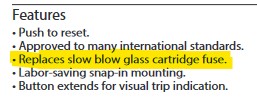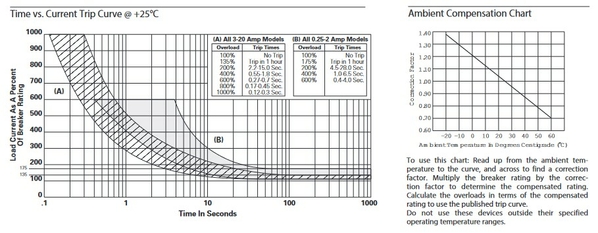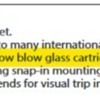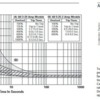@rplst8 posted:I couldn’t find anything in stock at Digikey or Mouser that was instantaneous from Eaton when I looked a few days ago, but this doc below has a cut away of their AR series breakers and they specifically talk about extinguishing grids to control arcing. Is that sort of the feature you were looking for @SteveH?
Ryan, than you for looking for a solution and the link. Eaton's extinguishing grids do appear to perform the same or similar function as an Arc Chute and Arc Dissipation Plates. I'm hoping we'll also get to see and understand what's inside the Airpax Snapac specifically and if it's any different from others.
@harmonyards Pat, thank you for offering to cut open one of your older Airpax breakers. I look forward to seeing your pictures of it.
Cal, thank you for your insights and reply. Please see my comments and questions below within your quote box.
@Caldwell posted:Steve I have enough knowledge about electrical to be dangerous and I have not heard arc shoots in twenty years. I will try to answer your questions about that since you have waded into the area of serious circuit breakers.
A couple of simple observations. No such thing as an instantaneous breaker. Yes that's absolutely true, these claim a trip time of 0.1 seconds = "Instant". That's why every time I have used that word I put it in quotes. The breaker has two pieces of metal and when bad things happen they open. There is always an arc between the contacts until they are far enough apart. In large heavy duty breakers it takes a serious gap for the arc to stop. Hence the need for shoots. Understood I would guess a minor factor in train applications. Probably so, but there is still an arc that would cause pitting on the contacts if not dealt with in some way. These Airpax breakers have an endurance rating of "in excess of 50,000 cycles..." (which is reduced by higher voltages and current loads). So, until Pat looks inside, we may not know exactly how these breakers absorb the arc energy.
Back to your original questions go back to Pat and John (John?), speed and the curves on time. Not sure what you mean here, but I do understand the trip curves for the 3 delay types and my original questions are unrelated to time delays. Would you please clarify what you're saying if unrelated to trip delay curve?
Back feed well we have had cases when motors turned into generators and that wreaked havoc but not a concern with train motors. My understanding is that back feed can and does occur in both cases (just many orders of magnitude less in model trains). In the case of a derailment, the generated voltage spikes can be much higher than normal operating voltage due to two or more motors' rapid field coil discharge currents. Of course, this can be diminished when TVS diodes are strategically placed within the circuit (but TVS has been well covered elsewhere).
The back feed conditions I was trying to ask about were unclear. What I'm wondering is:
Even though there are other very good reasons not to do so (and not the question being asked), are there any reasons why permanently connecting a 120 - 240V AC Hydraulic-Magnetic circuit breaker backwards (ie. line terminal connected to the load and vice versa) might diminish is rated service life (endurance = number of cycles before failure)?
and
Does a 120 - 240V AC Hydraulic-Magnetic breaker containing an Arc Chute dissipate a breaking arc current which might flow into the breaker from either Terminal (Load and/or Line sides) by routing the arc thorough the chute, regardless of which pole the current enters?
Thank you again to all who've contributed to this topic so far.








